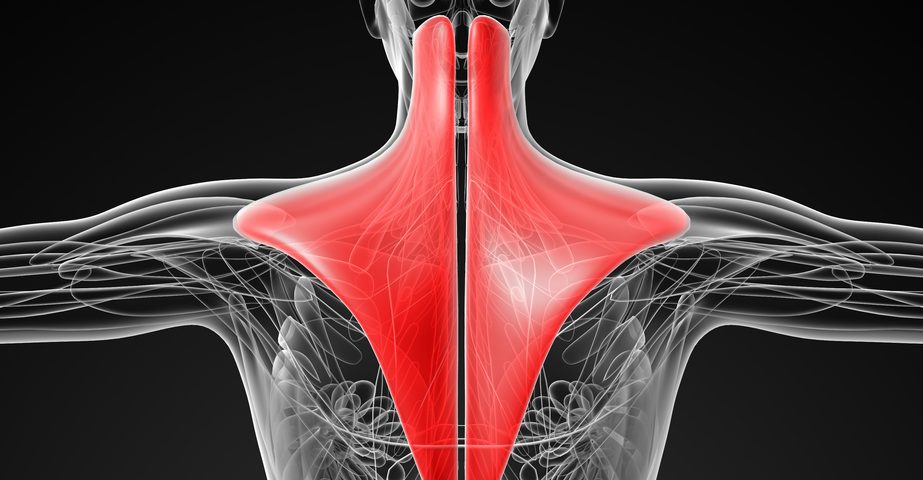Because of its location and size, the trapezius muscle has been a point of interest for researchers who study fibromyalgia (FM) and chronic pain. Recently, a group of international researchers released findings from an exploratory study that brings to light specific proteins involved in increased levels of pain throughout areas of attachment of the muscle – associated bones, tendons, and ligaments.
The study, “Specific proteins of the trapezius muscle correlate with pain intensity and sensitivity – an explorative multivariate proteomic study of the trapezius muscle in women with chronic widespread pain,” was published in the Journal of Pain Research.
Trapezius Muscle and Fibromyalgia
The trapezius is a major back muscle and is involved in movement of the scapula (shoulder blade), head, and neck.
Previous research showed that patients with FM who undergo stressful events and increased trapezius muscle activity, experience a rise in pain levels throughout the neck and shoulders.
About this Study
Researchers wanted to understand the protein composition within the trapezius muscle tissue and its relation to pain intensity and pain thresholds in FM patients. Enrolled were 18 female patients with FM and chronic widespread pain (CWP), and 19 healthy controls.
Muscle biopsies were taken from each patient to analyze protein composition. A pain intensity survey was taken two hours prior to the muscle biopsy, and pressure pain thresholds over the trapezius muscles were measured by an electronic pressure algometer.
The findings showed that the protein composition within the muscle tissue in patients with FM and CWP were mostly proteins involved in stress and inflammation, muscle damage, and muscle recovery; and those proteins were present at higher percentages than the healthy controls.
The results led researchers to conclude that the increased expression of the proteins in patients with FM and CWP could be associated with a heightened inflammatory process and greater feelings of pain.
The authors caution that the results will need further confirmation studies: “Chronic pain is a complex phenomenon, and a biopsychosocial model is applied in clinical practice. This study adds information about the biological aspects, especially in the periphery (muscle). Such information can be of importance for designing treatment and rehabilitation interventions.”

